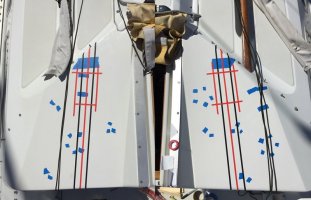Big projects start with small ideas
A while back I decided I wanted to update the deck hardware on either side of my companionway***. The winches were a little small, none of them were self-tailers, and, frankly, the way the lines were led to the clutches sorta bugged me. So… I figure,d, I’ll just change things a little. Re-do them in a way that feels right to me. No big deal.
Thus began a project that ended up taking the better part of a month, *after* I’d collected all the bits and...
-

21098.jpg
64 KB · Views: 1,172
-

21099.jpg
49.8 KB · Views: 329
-

21100.jpg
56.4 KB · Views: 330
-

21101.jpg
70.7 KB · Views: 348
-

21102.jpg
57.3 KB · Views: 318
